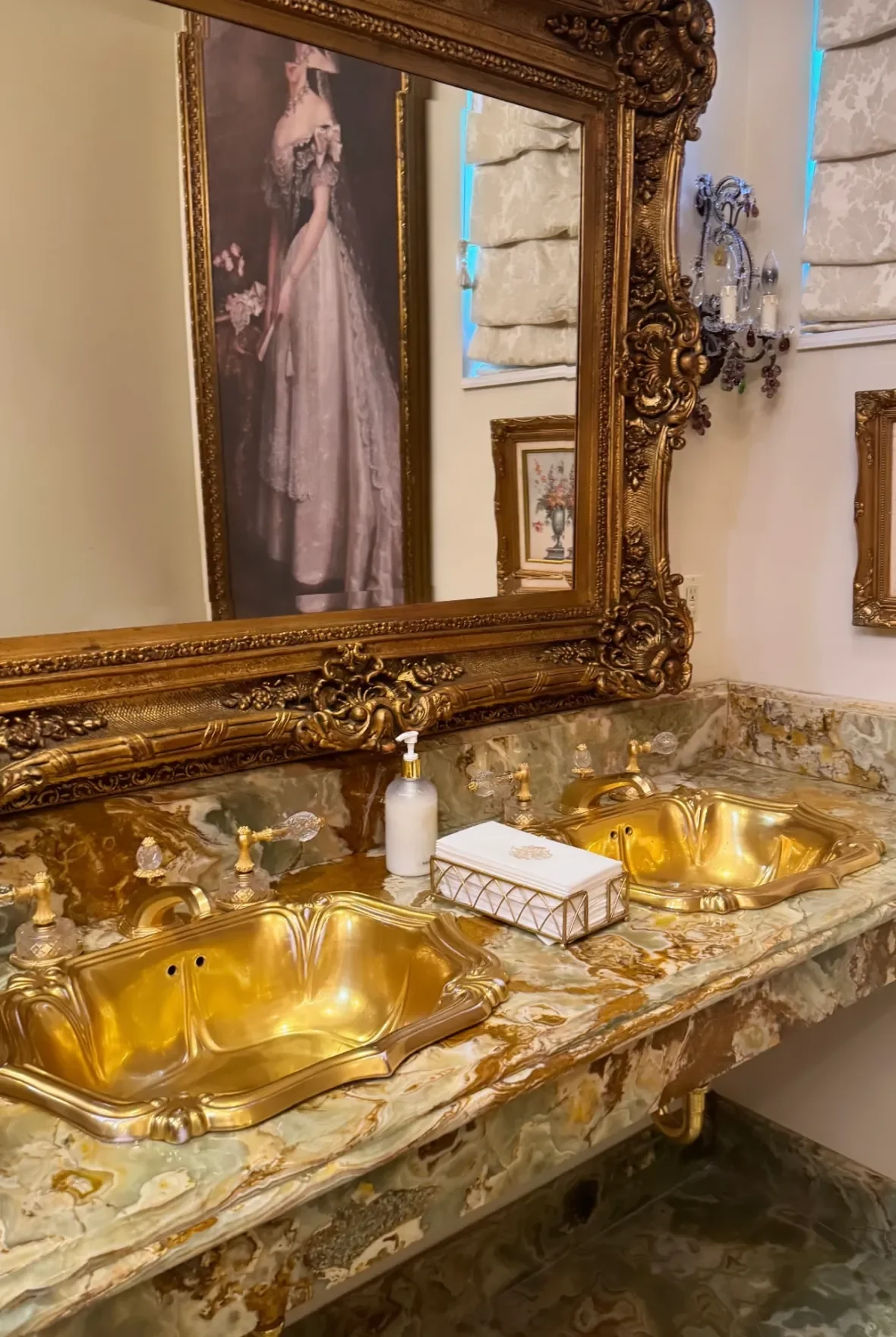Inside the Vision: Mar-a-Lago Architect Tamara Peacock on Trump’s White House Plans
When Donald Trump bought Mar-a-Lago, the historic Florida mansion had suffered decades of neglect.
The new proprietor was particularly concerned about the state of the lavatories. Gentlemen had to use a urinal trough, and the cubicles were fitted with plastic sliding doors.
Trump had a vision, however. He wanted to create sumptuous facilities with golden taps, marble floors and glittering chandeliers.
“He did add the gold and the chandeliers,” said Tamara Peacock, 67, the Florida architect who oversaw the refurbishment of Mar-a-Lago. “I don’t think I’d ever ordered gold plumbing.”
As Trump forges ahead with his renovation of the White House, he has not concealed the garish decor he wants to recreate. This month, he proudly shared pictures of a new lavatory at the White House, complete with golden taps, marble floors and a glittering chandelier.
It is not the first time Trump has imported the Mar-a-Lago aesthetic to the White House. When Trump paved over the lawn of the Rose Garden this year, journalists noted that the striped yellow umbrellas installed on the patio resembled the poolside parasols at Mar-a-Lago. Karoline Leavitt, the White House press secretary, said: “Yeah, I mean, they are literally the umbrellas.”
President Trump’s paving over of the Rose Garden lawn at the White House has prompted mixed reaction
Then, when Trump demolished the East Wing of the White House to make way for a $300 million ballroom, critics likened the renderings of his planned entertainment space to the Versailles-inspired banqueting hall he opened at Mar-a-Lago in 2005.
Contractors demolished the East Wing of the White House last month.
Peacock, who helped to transform Mar-a-Lago from dilapidated mansion to glitzy private members club, believes the White House is in good hands as it undergoes its biggest refurbishment in three quarters of a century. “I have a lot of confidence in him,” she told The Times. “He grew up with his dad as a builder, so he knows.”
Mar-a-Lago was once America’s most expensive home. Built in the 1920s for Marjorie Merriweather Post, a breakfast cereal magnate, the house is a gaudy blend of Moorish, Hispanic and Venetian architectural motifs.
It was recognised as a National Historic Landmark in 1980, when the listing said the estate embodied the “baronial way of life” enjoyed by Floridian plutocrats during the roaring twenties.
However, by the time Trump set about refurbishing it in the 1990s, the mansion was looking forlorn. “When I met him, the house was in a terrible state of disrepair,” Peacock said. “It hadn’t been occupied for a while.”
Trump was determined to restore the property once known as the winter White House to its former opulence, and hired Peacock to oversee the construction.
Every Friday night he flew down from New York so he could stroll the grounds for two or three hours on Saturday morning, articulating his vision to Peacock. “He made every small decision,” she said. Thanks to fire regulations, Trump was told he must install sprinklers. So he plated them with gold.
After salvaging the moulds from the parrot statues that had originally decorated the grounds, Trump cast new statues and situated them next to the pool, restoring the property to its sub-tropical grandeur.
At times, there was pressure to reduce costs by, for example, using concrete slabs instead of coral for the driveway. But Trump insisted on the highest-quality materials — which donors paying for the construction of the White House ballroom probably ought to bear in mind.
“I’ve seen the headlines about how expensive it will be,” Peacock said. “I will tell you, from a cost standpoint, he didn’t cut corners. When I worked with him, he didn’t say, ‘Oh, get me prices on this and we’ll decide’. It was, ‘This is what it needs to be and we’re just going to do it’.”
The hands-on approach Trump took at Mar-a-Lago will be familiar to those who saw the president walking on the roof of the White House this year, overseeing the ballroom construction work.
“Sometimes he would be yelling at people like, ‘Those doors look like shit’,” Peacock recalled. “One time I ended up taking a big breath and yelling right back at him, ‘They’re not finished and if you don’t let them finish, you’re not going to get your CO [Certificate of Completion]’.”
Although the relationship between architect and client is often bumpy, that between Trump and Peacock survived the stresses of the Mar-a-Lago redevelopment. “I remember a discussion at the house about whether he would ever run for president,” Peacock said. “I remember him saying something like, ‘Well, the country would have to be really in bad shape for me to do that’.”
While working at Mar-a-Lago, Peacock met celebrities including Michael Jackson, Tony Bennett, Celine Dion and Diana Ross. She also recalled Madonna doing a photoshoot at the house.
There were missteps along the way. Trump admitted that his decision to match pink marble with yellow walls in one of the bathrooms had been a mistake. “He wasn’t afraid to backpedal on a decision,” Peacock said. “When we would walk the property, I wasn’t allowed to take notes. I would get back to the car and take five pages of notes.”
Despite his love for Mar-a-Lago, Trump has described the White House as his favourite building in the world. If there are any blunders during the construction work there, Peacock believes that the president has the architectural expertise to correct them. “I would have some confidence that he’s gonna make it better,” she said. “It won’t disappoint.”


